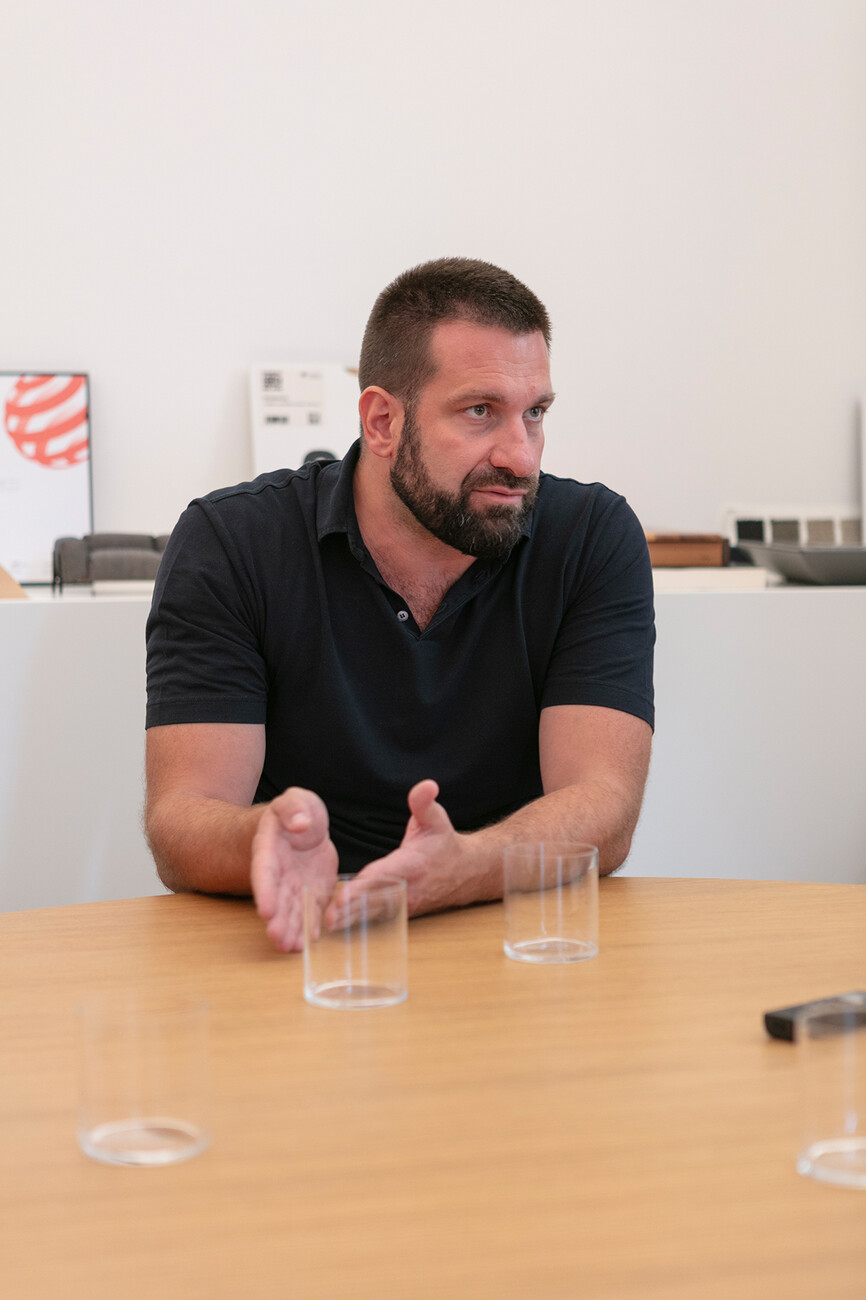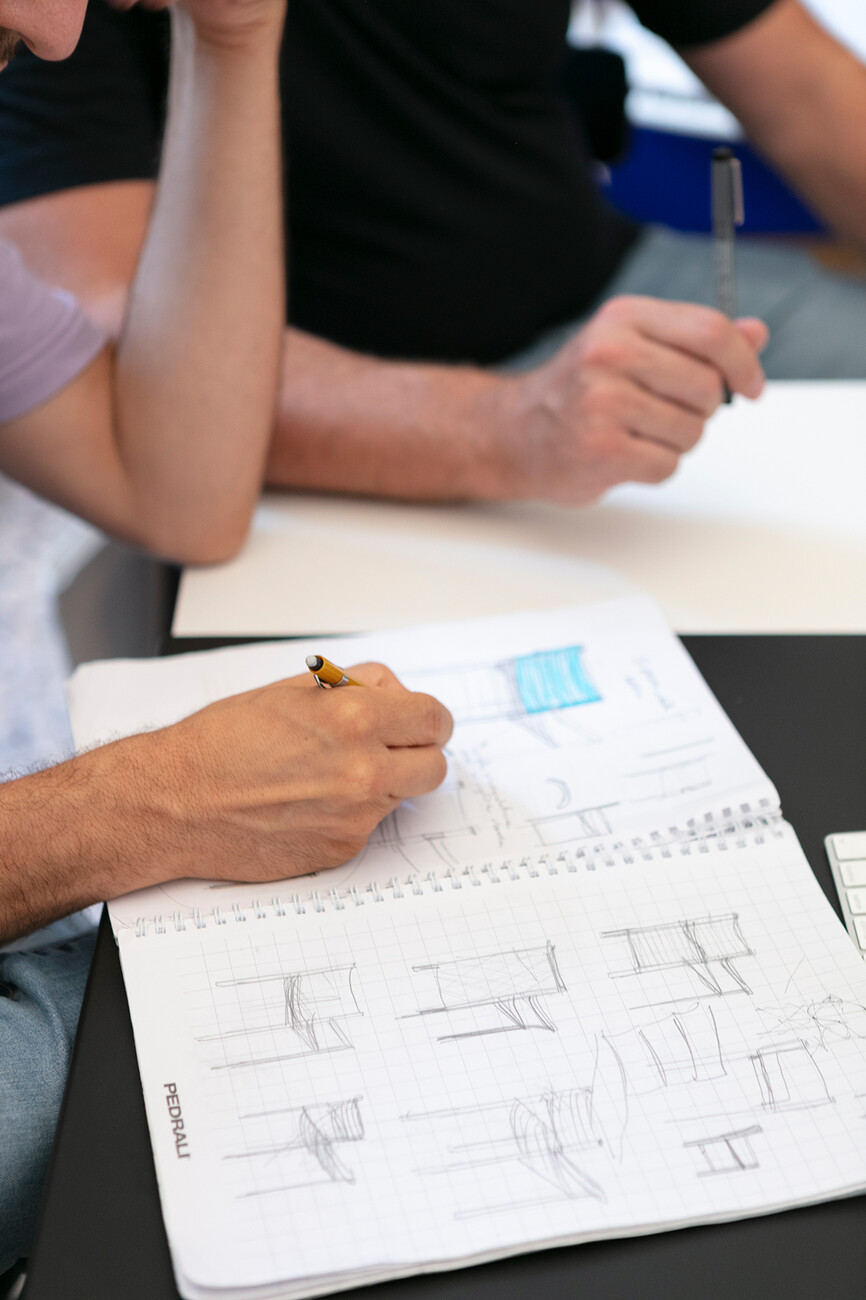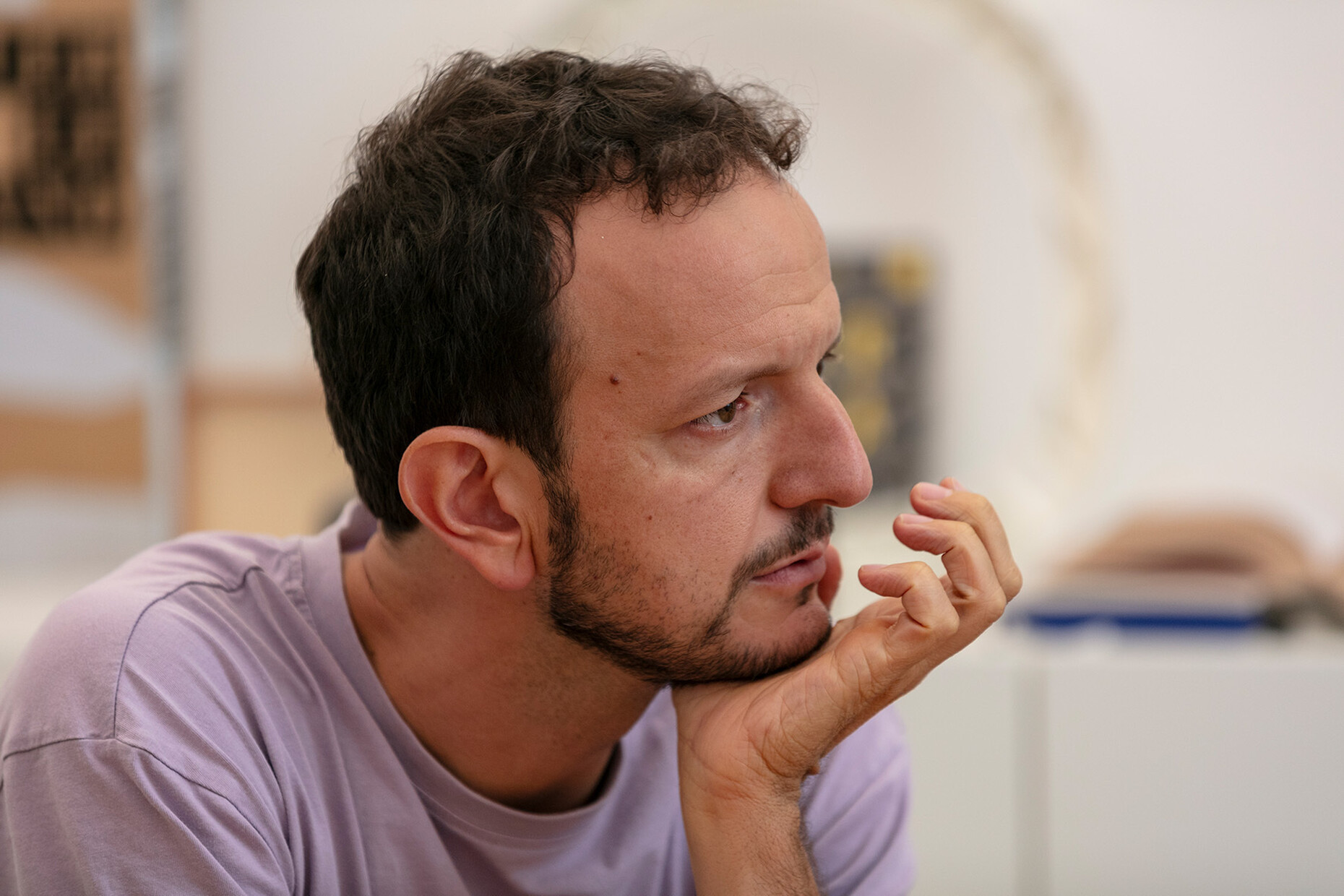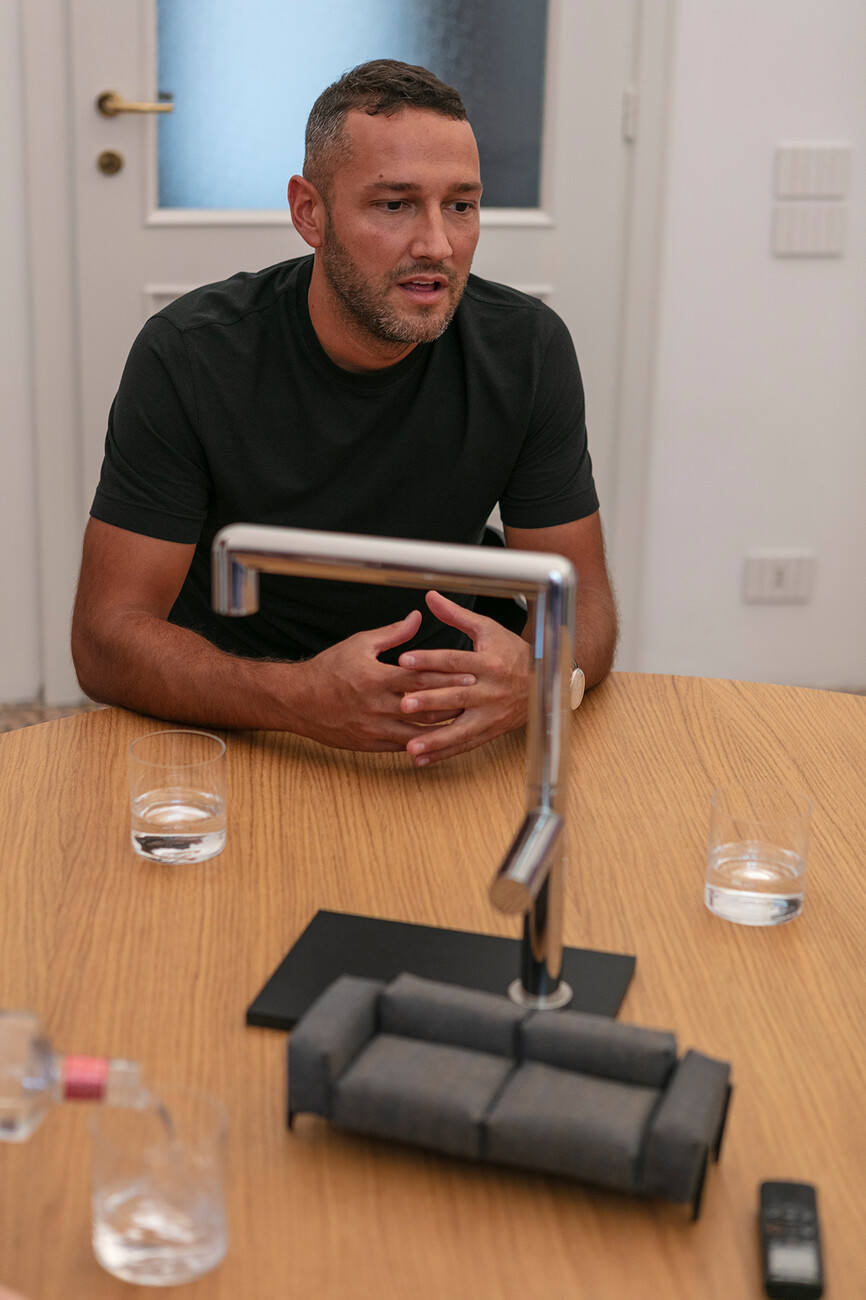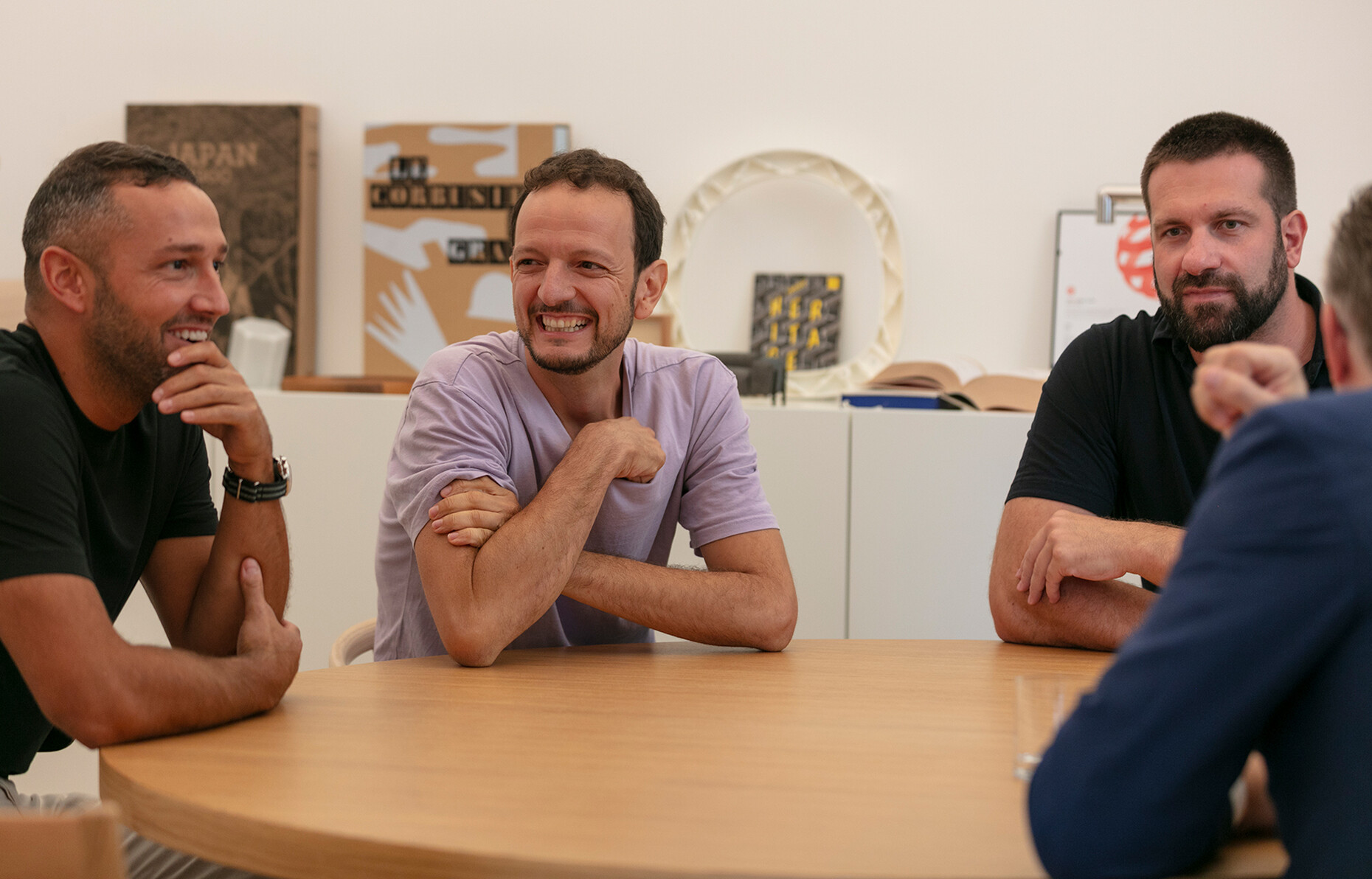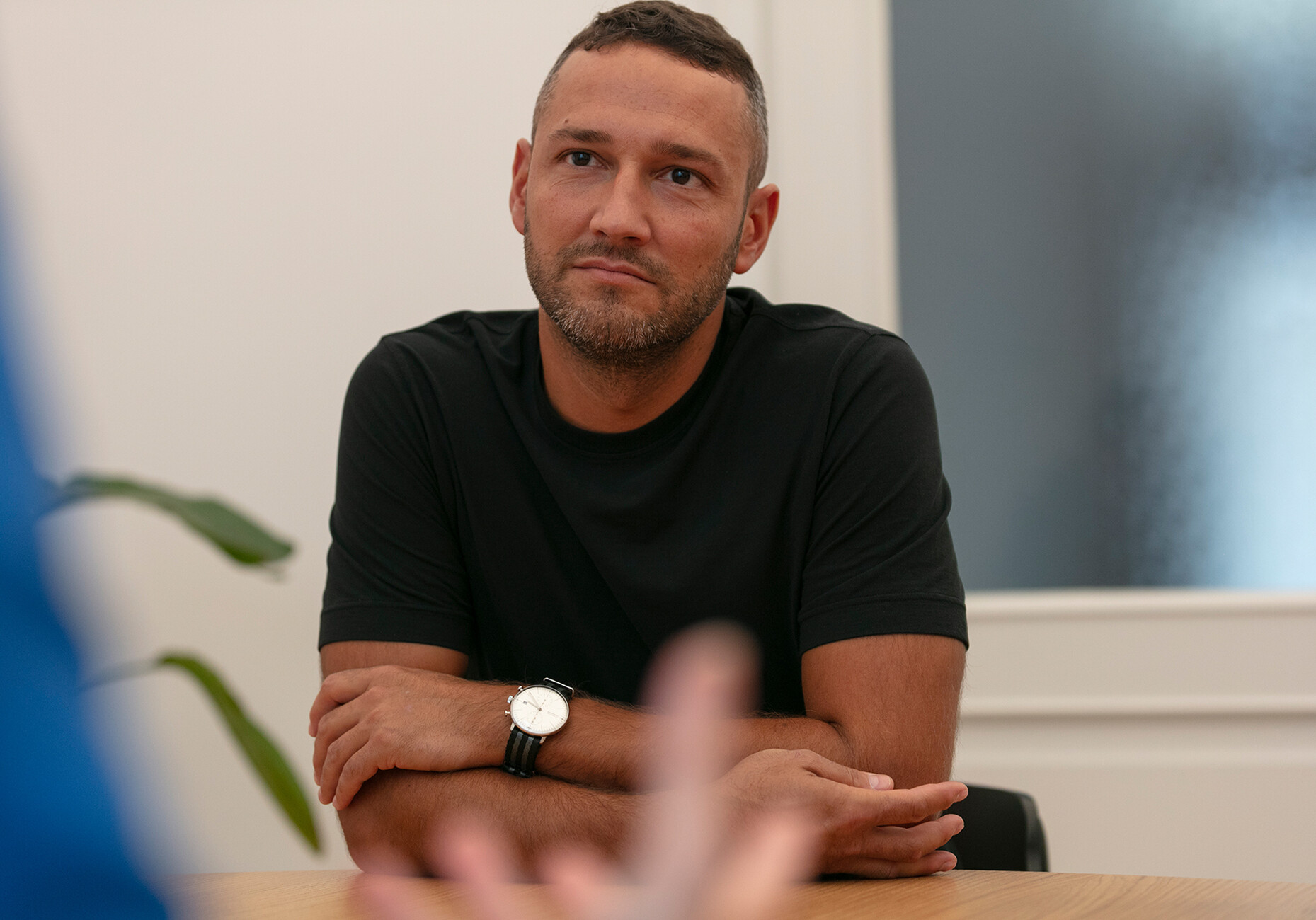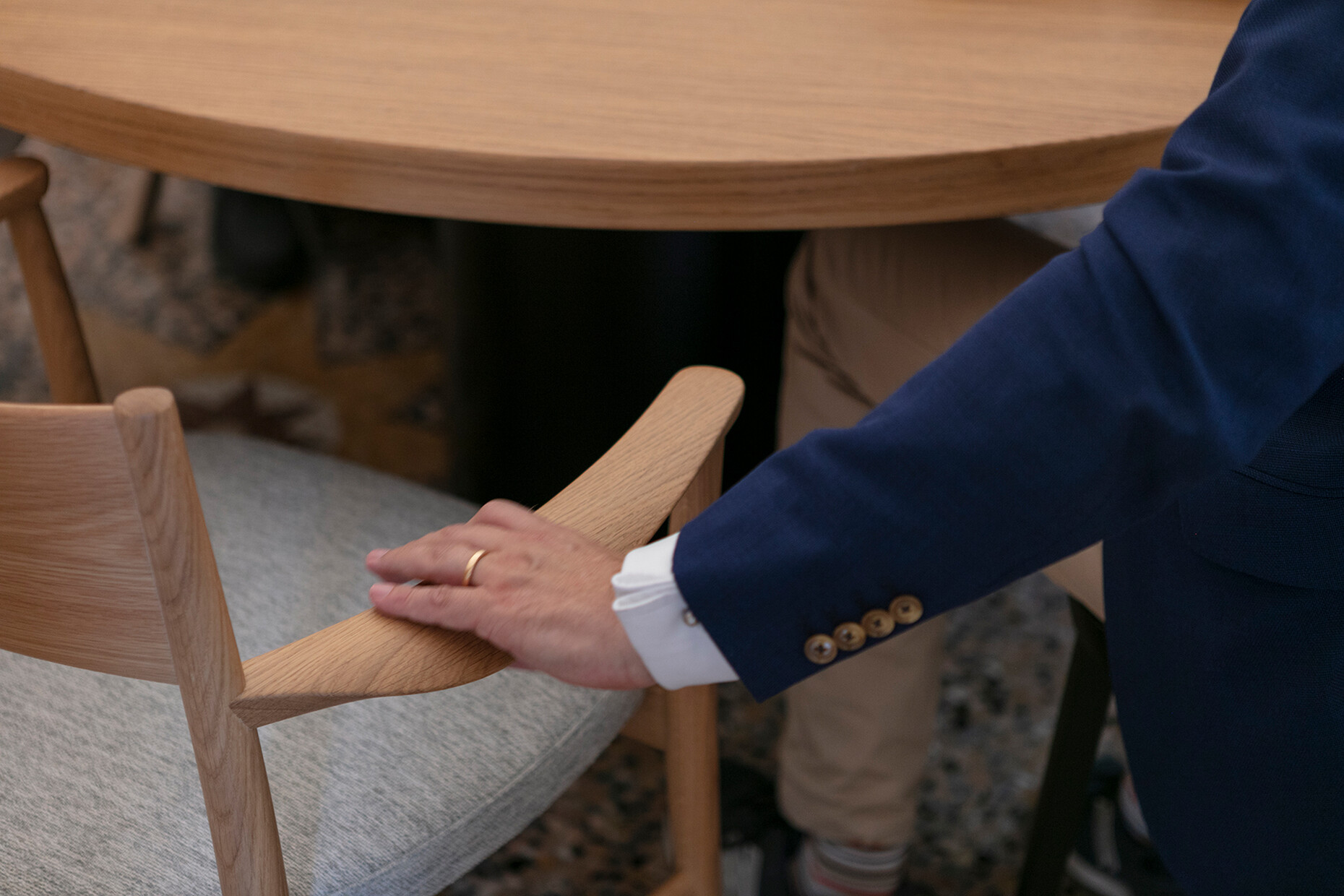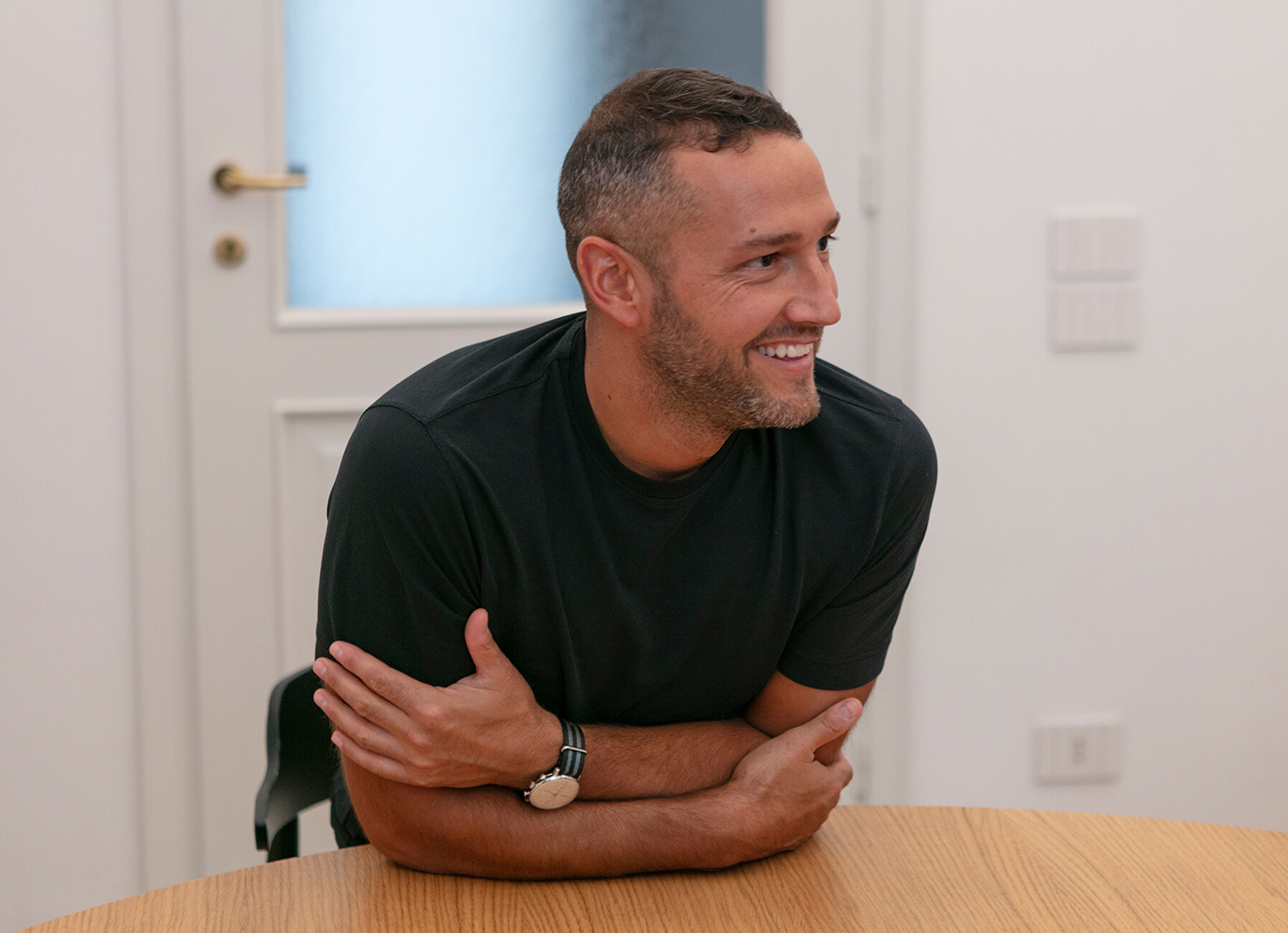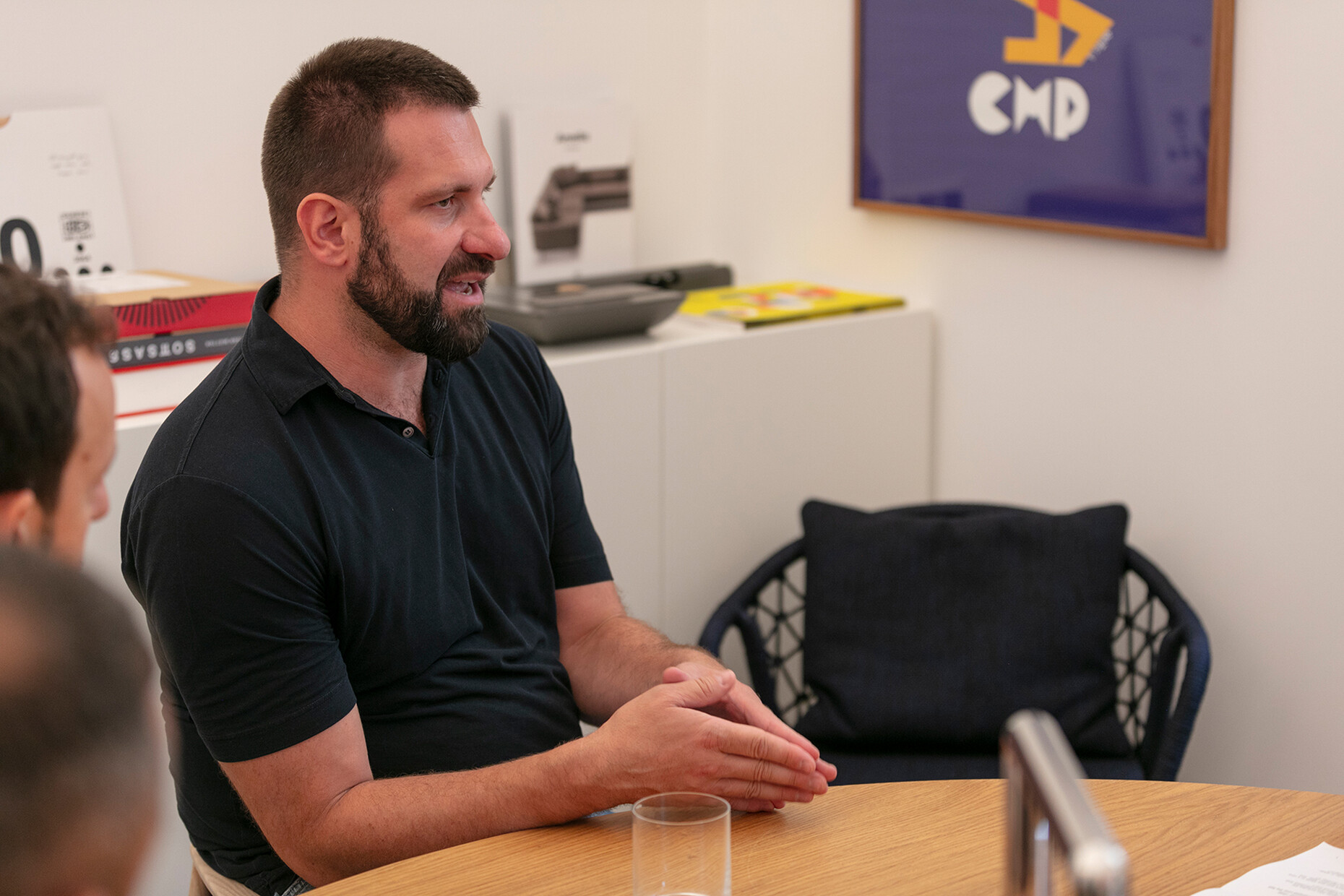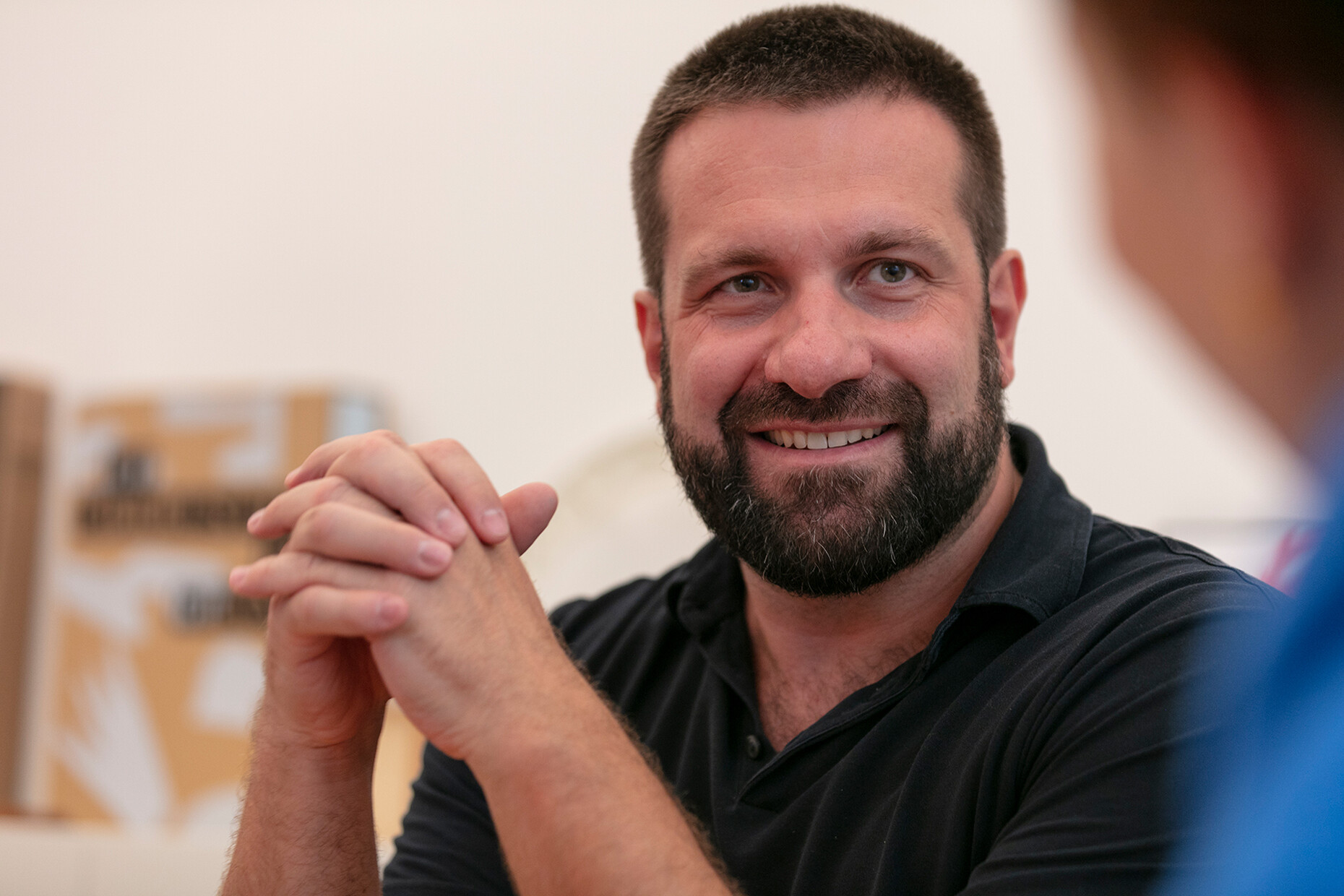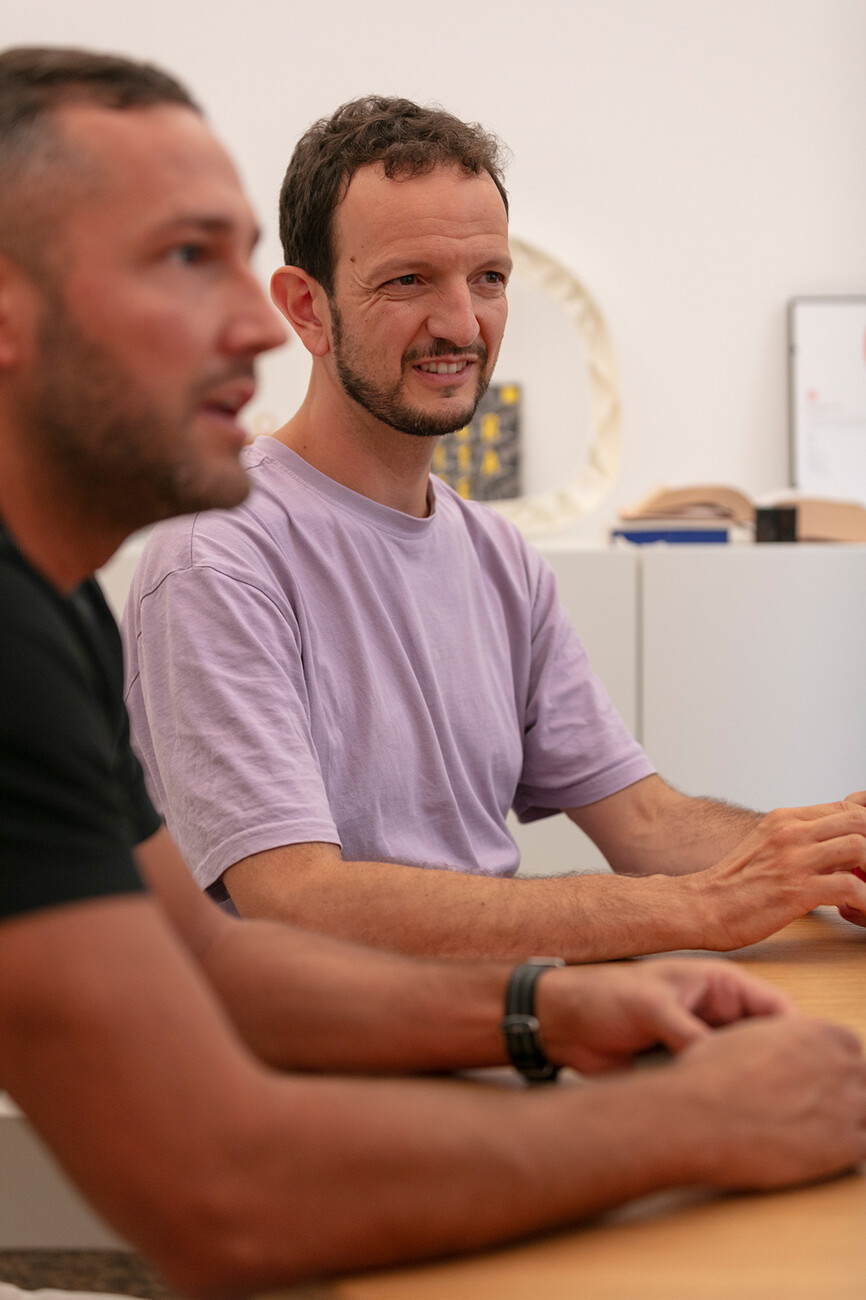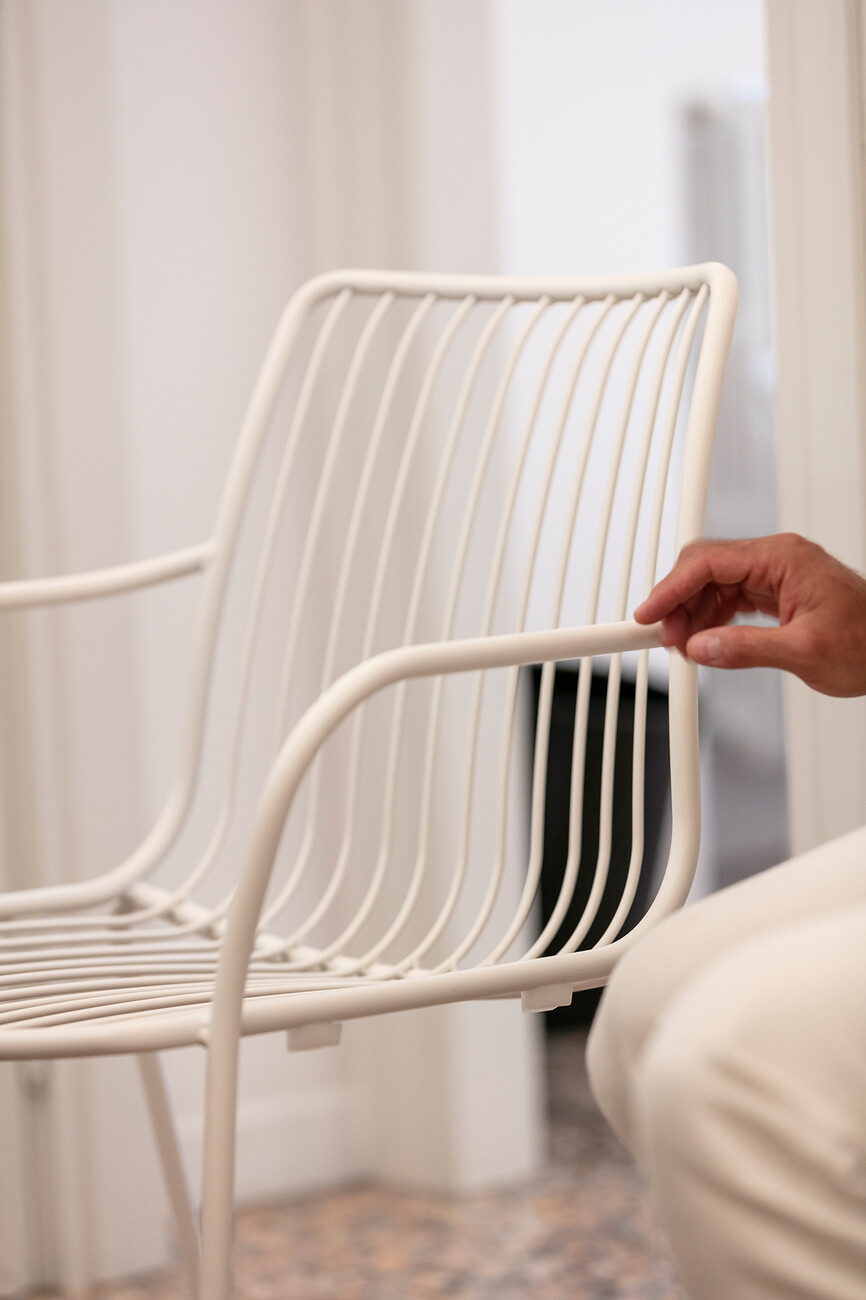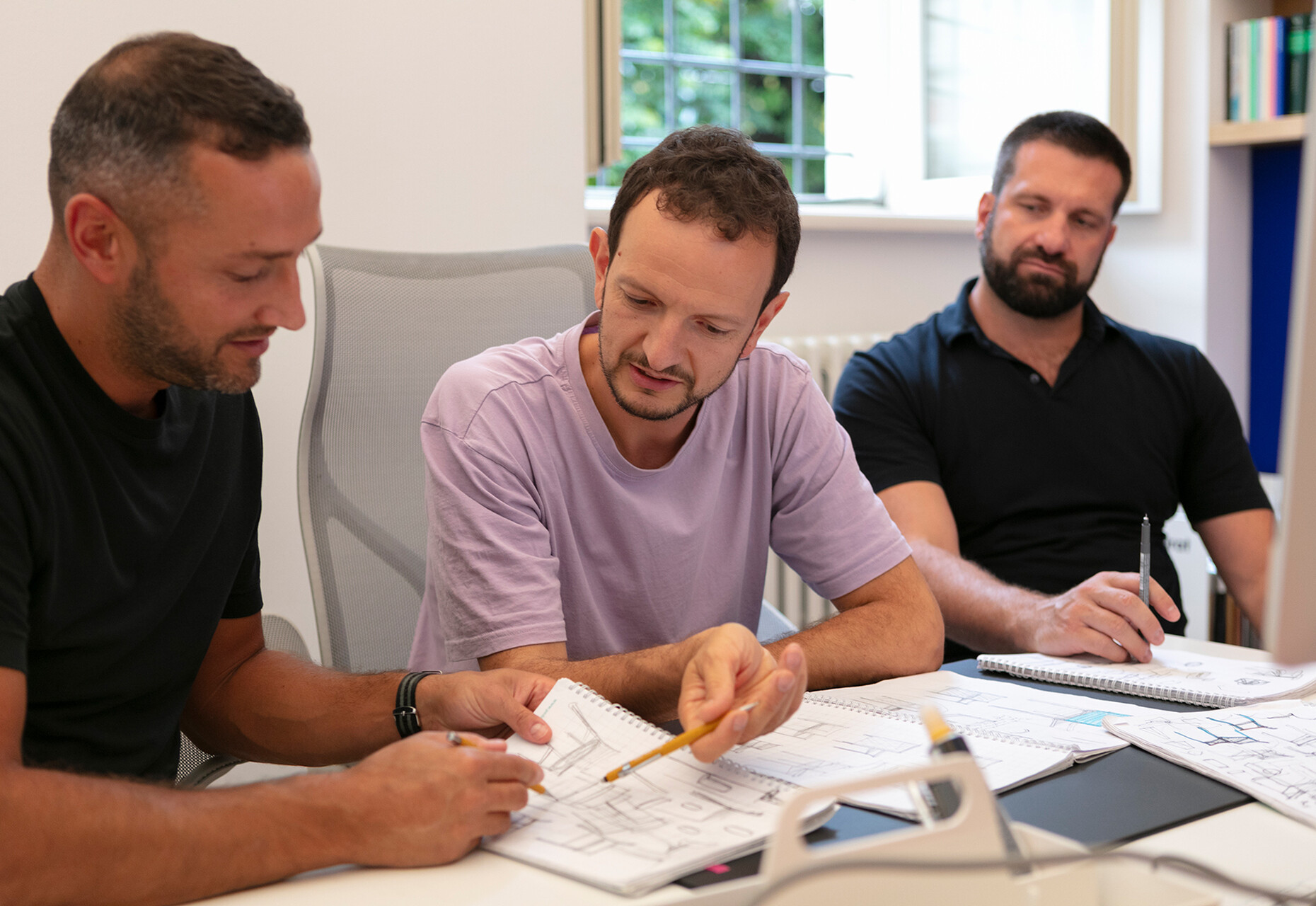Perfection with Lightness
Robert Volhard: Which criteria must product and industrial design currently meet in order to be innovative?
Michele Cazzaniga: In our work, innovation is a gradual process. We experiment with ideas and learn from every project. One thing we focus on is sustainability but this is not something that is achieved simply through a product’s longevity. Rather, sustainability must be the yardstick when selecting the material or considering production details, too. Moreover, we also consider it innovative to perfect how people use objects.
Antonio Pagliarulo: Mankind has been on Earth now for 200,000 years, but that is a relatively short period of time compared with the 4.5 billion years in which the planet has existed. Nonetheless, we have seen enormous advances in technologies and methods of working over the last 2,000 years. We are obsessed by innovation, it is in our DNA, but notwithstanding our desire to move things forward what we should not forget is that we also need to improve human relationships. It is our firm belief that conviviality is what we as human beings need. It is high time we altered how we relate to one another. As a studio we are quite content with realizing one new product every year or even every two years. We want to allow ourselves enough time for the development in order to create something that will be enduring and timeless.
Anna Moldenhauer: Why do you find it more fascinating cultivating several ideas over a longer period of time rather than developing many variations from one idea?
Michele Cazzaniga: There has to be a specific reason for designing something. We ask ourselves before really getting down to work whether that object serves a purpose or not. If a variation does not satisfy any deeper purpose then it’s not necessary. We conduct intense discussions beforehand to make sure it does. Communication is essential to design. In these discussions we highlight every detail, the materials, the process, whether the product serves a purpose. I guess you could call us pretty picky.
Robert Volhard: How can you tell that you’ve reached the right point for starting a project?
Michele Cazzaniga: Well, Antonio, for example, can draw very well and through these sketches and his interpretation our joint ideas appear in a different light.
Antonio Pagliarulo: In the course of the year we will invariably fill several sketchbooks in the effort to capture every aspect, every change right there in the drawing. Similarly, when talking to clients like Pedrali, we translate their feedback directly into a drawing. These sketches help us in the discussion, they form the basis for all else. First we draw sketches, then we make a 3D model and renderings, and finally a 1:1 scale physical model which allows us to see first-hand the production problems and re-adapt the 3D model to provide to the industry. At the time of presentation to the company, it is quite likely that we use the renderings to show color and finish variations, and the physical model to definitively "convince" the customer to start a "discourse about the object". When the conversation has started, you are already dreaming together, you are already planning something that will happen.
Simone Mandelli: As the three of us have known each other since studying at Milan Polytechnic in the early 2000s, we can tell by the other person’s expression and body language whether we have reached the right point with the project or whether something is missing. Aside from discussions sensitivity and empathy are decisive. Sometimes it’s just as difficult to express criticism as to explain why you like an idea. Luckily for us Michele has a photographic memory and is quick to recognize if a design is too similar to a product that’s already out there. He is also very good at judging whether an idea can be realized with the technology that the manufacturer in question uses. We sometimes jokingly call him "Michepedia", because he has such an extensive knowledge of design. By contrast, Antonio has a very creative outlook and sometimes has his head a bit in the clouds. We all have very different approaches to our work.
Anna Moldenhauer: Yet you manage to find a joint balance in every project. One of your guiding principles is that the more authentic the designer’s dedication to the future users, the more meaningful an object is. What questions do you ask to reach the users of the future?
Simone Mandelli: We are the future users. In other words, we are also designing something for ourselves, rely on our feelings to decide what works well and what doesn’t. That involves intensely observing the designs all around us, including what we see when we have downtime and are, for example, on the road. What’s more, as we see it design is not about creating an expression of ourselves but about functional progress.
Michele Cazzaniga: In our collaboration with the companies we get a lot of different feedback for every design regarding the aesthetics, user-friendliness, comfort, and economic viability. So we also learn a great deal from our clients. As our products are primarily conceived for rooms where people get together, for instance apartments, hotels, restaurants, or offices, their perspective is of crucial importance for advancing and perfecting the product. However, as a designer you also have to develop a sense for what feedback is useful to move things forward that next step and which is not.
Anna Moldenhauer: You design furniture, bathroom fittings, fabrics, and are also active in graphic and brand design. What does it take, apart from the topic itself for you to find a commission interesting?
Michele Cazzaniga: That can differ a lot. Sometimes it’s the challenge that motivates us, sometimes it’s the people connected with the design. And then there are the possibilities that we’ve waited for or that we never would have thought of up until that point and which give us a new perspective – they are just as exciting.
Robert Volhard: Can you name a challenge you would like to tackle?
Michele Cazzaniga: We would really like to work on a broader range of objects and products and get involved in finding a solution at an earlier stage. Often, we set ourselves challenges. This kind of thing hinges on having a good relationship with our clients.
Anna Moldenhauer: Thanks to the extreme bandwidth of your projects you are able to put yourselves in the position of the company and the users; you see both sides.
Simone Mandelli: This interdisciplinary approach stems from our days as students at the Milan Polytechnic, because back then we were able to pursue a wide range of interests. Essentially, our studies were akin to a collective workshop and we learned a lot about brainstorming, swapping ideas. We have maintained this kind of collaboration. As a designer you should not be blind to other areas of design.
Robert Volhard: What stipulations do you think a collaboration should meet, be it with regard to the materials or the company’s certification?
Michele Cazzaniga: We don’t want to waste any material in our products. As recently as ten years ago when hardly anyone was talking about sustainability we designed chairs that can be completely dismantled either to be repaired or recycled. Fortunately, there are now more opportunities to talk to customers about what it takes for a design not to contribute further to the amount of waste we produce further down the line. We want our furniture to be used for generations. We want a fair design that is founded on sustainability with a classic function and appearance.
Robert Volhard: If we stick with the example of a chair, of which there are countless examples in the world: When does it make sense to design yet another one?
Michele Cazzaniga: When the new design makes a difference, when it represents an evolution of what already exists and offers a varied configuration.
Antonio Pagliarulo: When we developed “Cartesio”, our first tap for Ceadesign, we were able to achieve minimal radii by using a laser. There must be an innovation in every product that we design and this is something that sometimes also leads to a technological advancement for the company.
Anna Moldenhauer: One thing you’ve been quoted as saying is that your products say a great deal about you. What can be read about you from the “Guinea” outdoor chair that you recently designed for Pedrali?
Michele Cazzaniga: “Guinea” is made of many different materials and each one serves a different purpose. Functions and materials come together in the design: It has a light aluminum frame, can be stacked, and has removable covers made of water-repellant textile mesh. The chair is equally easy to use either indoors or outdoors. This combination of practicality and aesthetics is something that required a great deal of tweaking and experimentation and says a lot about us. Equally, the design reflects Pedrali’s DNA because the meeting of ideas is crucial when you realize a product together. You might say the two parties are like father and mother for the design.
Anna Moldenhauer: Back in 2012, the “Malmö 395” was the first chair that you designed for Pedrali. How has your collaboration evolved since then?
Michele Cazzaniga: “Malmö 395” has a seat made from a bent plywood shell that is connected by screws to the base of solid ash. Designing it also motivated us to think about how such chairs are produced and what technologies are needed to realize our designs.
Antonio Pagliarulo: Pedrali invests generously in new technologies which is fantastic for us designers. When we first presented the design for “Nolita” it quickly became apparent that their production would have to be altered to realize this item. Giuseppe Pedrali promptly did some research, bought a new machine, and took on more staff to expand the company’s skills set.
Anna Moldenhauer: Even though your designs vary a great deal you have a clear, common language. A complex structure, but light in both appearance and feel, rounded, pleasant. You combine craftsmanship, contemporary trends, and new technologies in a harmonious way. It doesn’t require much effort to perceive and understand your design; rather, it welcomes the viewer. How do you achieve that?
Michele Cazzaniga: The interplay of feel and appearance is very important. Colors are also very important for our design process. When preparing the first rendering we already consider what colors the final design should feature. To do this we think about the place the design leads us to and what colors it has.
Simone Mandelli: We also always ensure that our design will appeal to an international public.
Michele Cazzaniga: The lightness of the objects must still exist when seen in repetition. In other words, if you put 53 models of a particular chair in a room the visual pattern this creates must seem just as lightweight as the individual chair. The object repeatedly refers to itself and in combination is like a flock of birds in the sky. With the chair “Tribeca”, for example, this lightness is achieved through the fact that you can look through the structure of the object.
Simone Mandelli: And then there is our style that we have developed over the course of the years and which will continue to morph. For example, we find inspiration in the structures and colors of modern art or Scandinavian design. For us, shapes are like words that make up our vocabulary and with which, with the help of design we can compose a poem or write a song.
Robert Volhard: What product would you still like to design?
Antonio Pagliarulo: We would love to design luminaires. This technology develops very quickly and would be a new challenge for us.
Simone Mandelli: When we create a new concept we always think of a product family that we then present gradually. Besides that we regularly conduct in-house workshops in which we select a design topic, do research on it, produce sketches and 3D-models. Many of the results are still prototypes, so we also have some ideas in the pipeline.
Anna Moldenhauer: We are sitting here in your new studio in Como. What was important when it came to the interior design?
Michele Cazzaniga: We spent quite a long time looking for the right premises for our studio. Most of the properties needed a great deal of renovation work; we also had to alter a lot here such as the salmon-colored paint on the walls and ceilings that Simone was not exactly enamored with (laughs). Now we’ve painted most of the areas in white and installed indirect lighting. This means that the traditional mosaic floor tiles can now come into their own. The division of the two rooms into a meeting room and our own office in which we sit together at a large table is ideal for us. Although the studio is not that large we can make flexible use of the space.
Simone Mandelli: We also often work in our workshop in Brianza where we develop our prototypes.
Robert Volhard: The design industry has been changing since the pandemic, and the importance of trade shows has also altered. What do you think is needed right now?
Simone Mandelli: We need more means of getting together to network, because that’s something we’ve really missed in the last three years. Currently, we meet up primarily in Milan during the Salone del Mobile and the Milan Design Week, but it’s hardly possible to discuss everything we would like to in the short time we have available and given that our program is full anyhow. In other words, communication within the design industry is faltering and ideas are no longer circulating as freely. As creative professionals our freedom consists of being inspired from many different sources, swapping ideas, and working on different projects. These are important requisites for our work and we need to work together to win them back.






